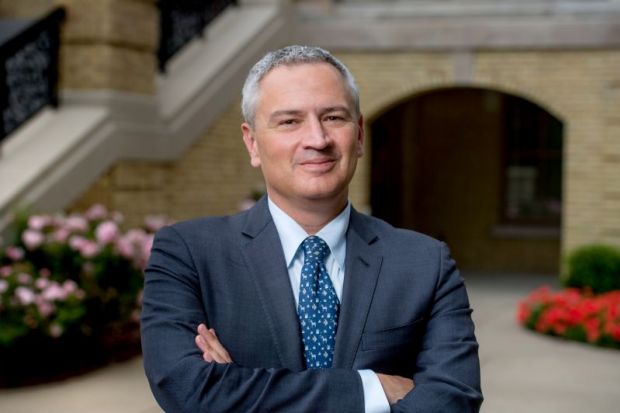“We don’t have the luxury – because we’re located in South Bend – to have people stop by while they come to the United States.”
Michael E. Pippenger, the University of Notre Dame’s newly appointed vice-president and associate provost for internationalisation, is explaining one of the reasons why the institution, which is based in America’s Midwest, works so hard at internationalisation.
“The assumption is that great scholarship happens in very elite cities along seaboards. So it’s not that people don’t want to work with us, they may just not know about us in a global context,” he said.
“One of the reasons that Notre Dame is so interested in internationalising is that we have an outstanding reputation within the US, and we’re very keen to get that word out into the wider global education community.”
The university has certainly implemented an aggressive internationalisation strategy.
It has five “Global Gateways” – in Beijing, Dublin, Jerusalem, London and Rome – which provide intellectual hubs for academics, students and leaders from universities, government and businesses. The gateways host academic programmes and summer internships for undergraduate and postgraduate students as well as conferences and events.
Almost two-thirds (64 per cent) of students at the private university study abroad for at least one semester or for a summer programme during their degree – one of the highest rates in the US.
Notre Dame also has six Global Centres – in Santiago, São Paulo, Mexico City, Hong Kong, Mumbai and Kylemore Abbey in western Ireland – which offer more focused academic programmes, involve scholars on an ongoing basis and help to promote academic and industry partnerships.
Back in South Bend, so called because of its location by the St Joseph River’s southernmost bend in the state of Indiana, the institution also runs summer programmes for international school and university students.
But, Dr Pippenger, who began his role at the Catholic institution in September last year after 10 years at Columbia University, is also looking for more novel approaches to promoting inward and outward student mobility, noting that an important area to address is how the university can “globalise the experience of the 36 per cent of students who don’t go abroad”.
The “traditional method” of student mobility is exchange agreements with other universities, where students spend time at an institution overseas, he said. But a “more interesting and forward-looking” perspective would be to integrate student mobility and faculty collaborations, so students are involved in academic research projects abroad, he added.
This approach could be implemented within existing international research collaborations, he said.
“We get locked in to the notion that the only way we can internationalise our students or our communities is through ‘traditional study abroad’,” he said.
“We’re really looking to create models of research that are fluid.”
Post-Brexit possibilities
Although Notre Dame does not yet have such a research programme with a university in the UK, Dr Pippenger said that this approach could be “very timely” as the country wrestles with its identity outside the European Union.
“As research funds dry up from the EU, or if they stand in question, it’s very important that a US institution like Notre Dame shows its leadership and shows that we’re really interested in funding not just our own faculty’s research but the research from partnerships with local academics,” he said.
Another distinctive feature of Notre Dame, alongside its bold internationalisation strategy, is its Catholic identity.
Dr Pippenger said that the university’s strong sense of identity and community is “very attractive to this [current] generation of students”, noting that an institution “where community is fostered and celebrated” and “where we look to understand difference within the community” is “more essential than ever before”.
But he said that it is the university’s global outlook that helps to make its community bloom.
“I don’t see our students as looking to be coddled or protected from the world. And I don’t think we as an institution see a value in that,” he said.
“If I’ve seen the world and lived abroad and understand difference through that kind of experience, then I’m in a better position to have a stronger, more nuanced and more sophisticated view of community and what it takes for a community to thrive.”
Although one of the university’s Global Gateways is in London, it was “really important” for Notre Dame students to get out “to all corners of the country”, Dr Pippenger added.
“If we’re going to understand each other’s countries and have this mobility, it can’t just be from one cultural elite to another or the same usual suspects,” he said.
POSTSCRIPT:
Print headline: Let’s get everyone and everything moving
Register to continue
Why register?
- Registration is free and only takes a moment
- Once registered, you can read 3 articles a month
- Sign up for our newsletter
Subscribe
Or subscribe for unlimited access to:
- Unlimited access to news, views, insights & reviews
- Digital editions
- Digital access to THE’s university and college rankings analysis
Already registered or a current subscriber?





